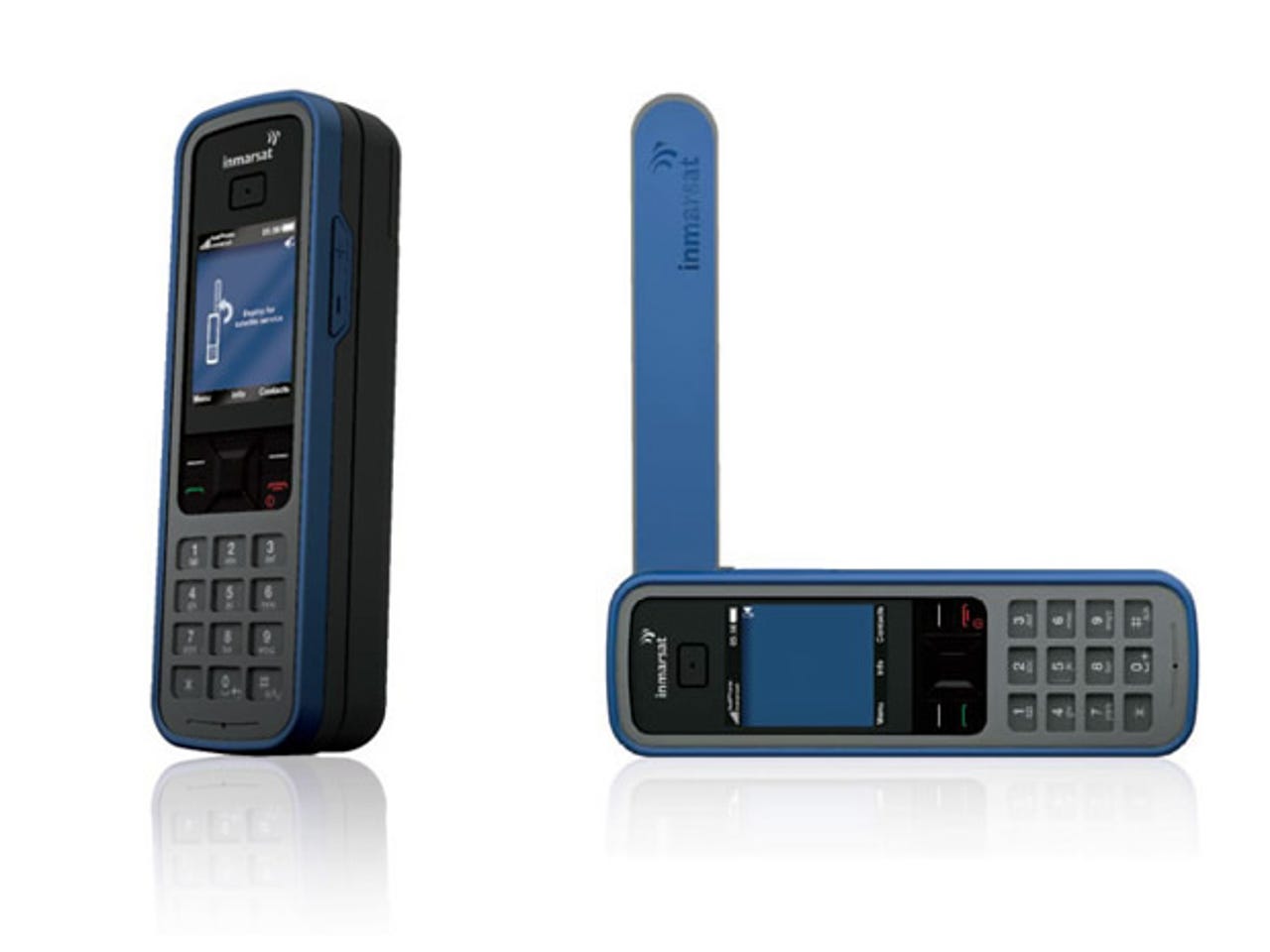Inmarsat IsatPhone Pro

A typical Isatphone Pro user will be someone who needs to communicate from a remote location on land or sea. This includes sectors like government, media, international aid, mineral extraction and construction.
Inmarsat's new and competitively priced phone is chunky and retains all the usual satellite phone limitations: you can only use it outdoors and, because it needs to communicate with Inmarsat's geostationary satellites, you have initially to point the antenna in the general direction of the equator to get a fix.
The 279g phone measures 54mm wide by 170mm deep by 39mm thick and includes a large fold-out antenna, a reasonably-sized colour screen, and chunky buttons designed to be used with gloved hands. The package includes four plug adapters, which cover most standard patterns.

Inmarsat's 279g IsatPhone Pro is heavier than your average mobile phone, and includes a sizeable fold-out antenna
According to Inmarsat, the phone is designed to be used in harsh environments, so is both splash- and dust-proof (to IP54 level), and offers up to eight hours' talk-time and 100 hours on standby. The operator claims it'll work in temperatures from -20°C to +55°C at up to 95 percent humidity, although it will only charge in temperatures up to 45°C.
The IsatPhone Pro offers a good range of features. As well as making phone calls, you can receive SMSs and send messages using predictive text entry, send emails, make a five-way conference call and use a Bluetooth headset. The phone offers caller ID and call history, waiting, barring, diverting and holding. It provides four built-in profiles to manage ring loudness and includes a GPS receiver. As well helping the phone get a fix on its communications satellites, the inclusion of GPS allows you to view a readout of your position.
You can sync your Microsoft Outlook or Outlook Express address book with the device over USB, for which drivers need to be installed on the PC; Apple Mac users, and software platforms such as Linux or Thunderbird, are not supported.
The phone offers the usual green (Call) and red (End) buttons, and gets top marks for providing a standard Micro-USB connector for charging purposes. Getting the chunky Li-ion battery in and out of its compartment is a little fiddly, as the battery cover requires you to use a coin to turn a screw through 90 degrees. We weren't able to test the limits of the device's ruggedness, but had no problem with battery life.
You shouldn't have any problems using the phone. With just a glance at the user guide to ensure we hadn't missed anything, the phone was ready to make a call within a minute or two of switching on following the necessary antenna-pointing, the device having obtained a fix on both GPS and comms satellites. Naturally enough, you'll need to use full international dialling codes.
Although it's not essential to continue pointing the antenna after the initial fix, you can't make calls when surrounded by high obstructions such as city buildings unless there's a clear path in the direction of the equator. If the signal gets critically low, the phone will warn you to re-orient the antenna.
Connection times are longer than those of cellular mobile phones but, once connected, you barely notice any digital effects. The 72,000 km round-trip taken by the signal is the same in both directions, so a slight delay is evident. Note that because it's using a geostationary network, it becomes more sensitive to the direction in which you point the antenna the further towards the poles you go. In fact, Inmarsat's BGAN (Broadband Global Area Network) coverage map on its website starts to run out north of the Arctic circle, so parts of Alaska, northern Canada, Greenland and Siberia, and most of Antarctica, are off the map. We weren't able to test the phone in extreme latitudes, but you'd probably have to point the antenna at the equatorial horizon to get a fix.
Other than the limitations imposed by the laws of physics, the device performed exactly as expected. The chunky buttons are easy to use while wearing gloves, which is key given the kinds of environments in which this phone is designed to operate. It's not pocketable in an regular environment, but if you're wearing work clothing or other heavy-duty outdoor gear, you won't mind lugging it around.
Satellite phones will never be slim and light as they demand too much power to capture the minute signals from 35,786 km up. However, the IsatPhone Pro is probably as portable as they get — and at around $650 (£400) it's not too expensive either.